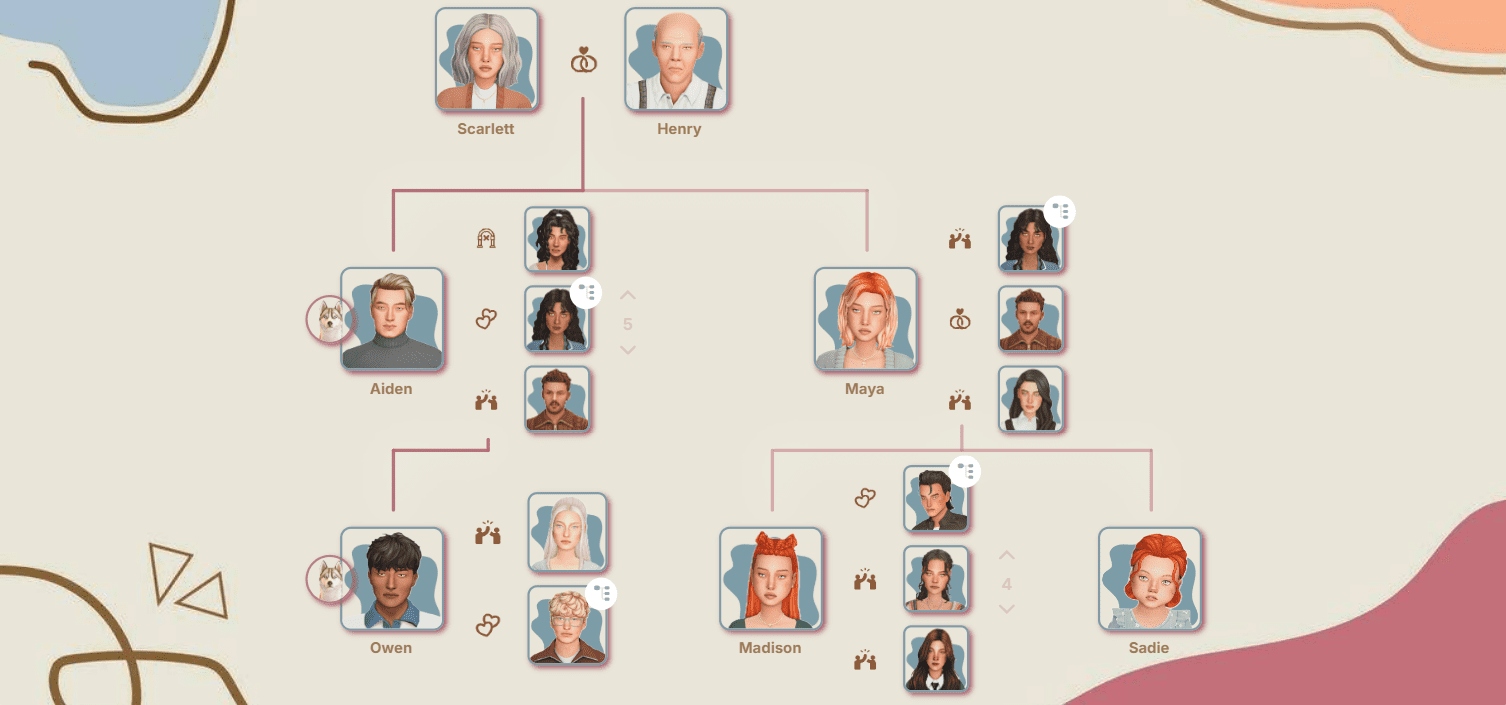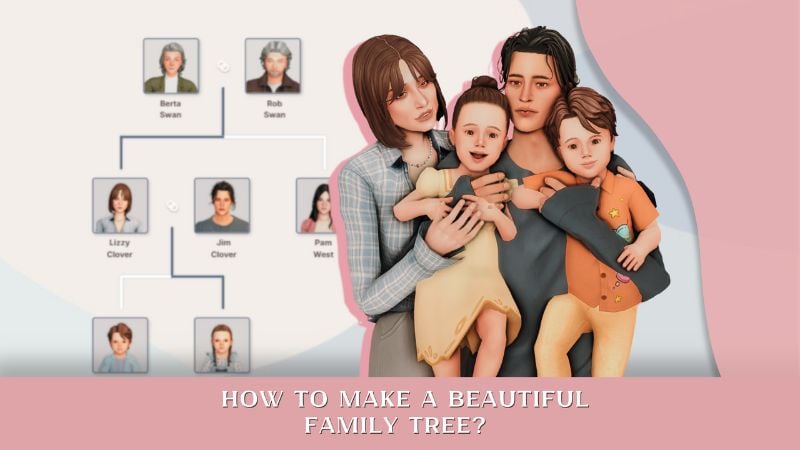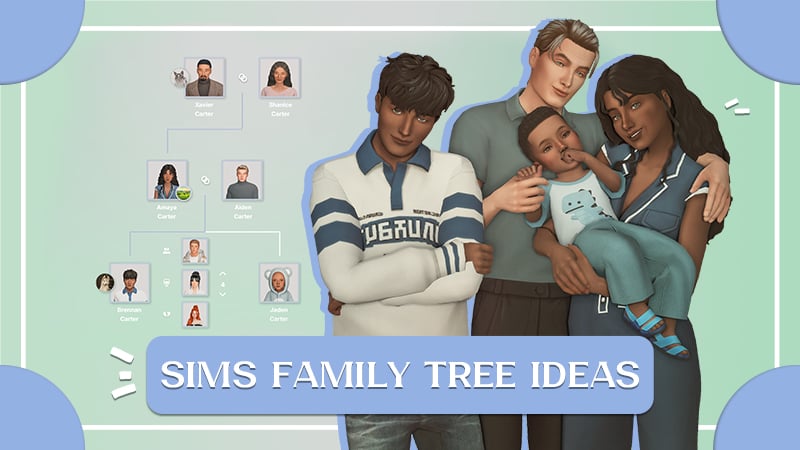Sims 4 Storytelling Guide: From Idea to Post – Step-by-Step Tutorial
I don't know a single simmer who hasn't had this moment: you launch the game "for half an hour", and then you wake up with 200 screenshots, a broken-hearted character, and the feeling that this isn't a game anymore – it's an HBO-level series.
And it seems like the story is already there: characters, conflicts, drama. But when you open Photoshop or sit down to write a post, there's only one thought in your head: "Where do I even start?.."
I've been there.
And I'm someone who's been writing dynasties for years. So let's calmly, step by step, break down how to create your own story in Sims 4 – without panic, blocks, or chaos.

1. First: the skeleton of the story
How to build the foundation of a Sims 4 plot
When I started my Duke family, I didn't have a script, just a bunch of ideas in my head. There was only an image: a family where love isn't salvation, but a trial. I knew the beginning (the birth of a generation) and I knew the ending.
Everything in between, I built around three points:
1) Beginning – what launches the story.
2) Climax – what breaks.
3) Ending – what remains.
Example:
In Arthur and Daphne's generation, it all started with a dream of family and true love, the climax was Arthur's parents not accepting his bride, and the ending was the realization that family is the place where your choice is accepted regardless of circumstances.
These three points are your framework. You might not know the details, but if you hold onto the nerve of the story, the plot builds itself.
2. Create basic lore
Character roadmap
Before you start playing, create a "roadmap" for your character. Write out three blocks for yourself:
— Where they start from, from birth itself: family, background, traumas, personality.
— What drives them: desires, fears, motivation.
— How their story will roughly end: doesn't have to be exact, just the "tone of the finale".

This is where keeping a family tree really helps, where you write out the lore of individual characters.
Example:
My Mila has had a fear of rejection since childhood and attempts to get rid of other people controlling her entire life. This affects every scene she's in: even her joy is anxious, and others continue to control her life, even though she thinks otherwise.
This kind of internal "lore" helps when you don't know what to write – you just go back to who your character is at their core.
3. Music, moodlets, and shots
How to bring a story to life through emotions
When I sit down to write out scenes, I put on specific songs that convey the mood of the moment. I take screenshots thinking not about the pose, but about the meaning: "What are they talking about right now? What are they feeling?"
I draw inspiration from moodlets – those +2 "flirty" or -1 "sad": they often say more about a character than words do.
Then I review the scenes and analyze:
- What is each character feeling?
- What fears, desires, motives does each have?
- What drives them and what are they afraid of?
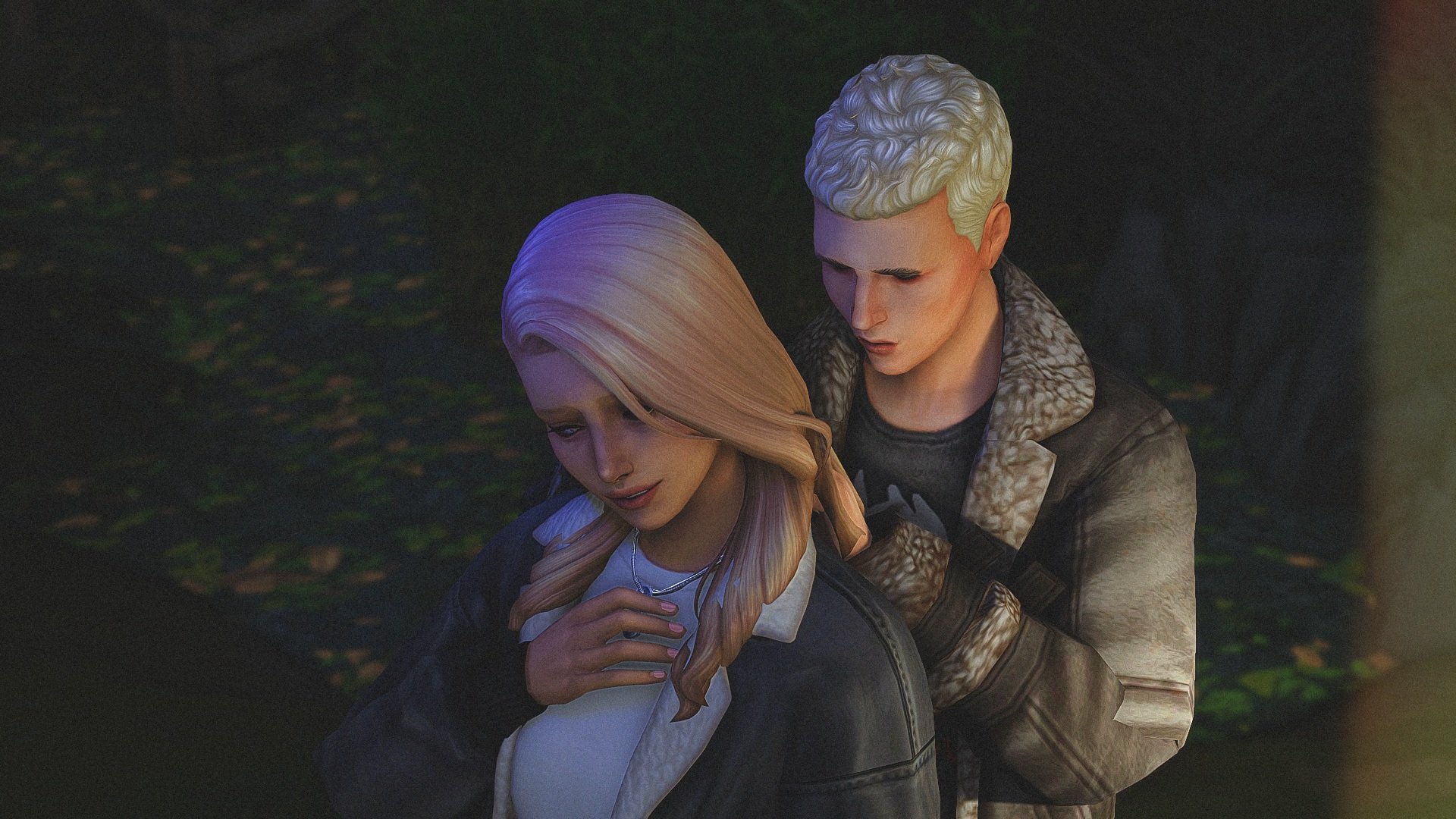
And only after that do I start writing – not the story, but the feeling of the moment.
Example:
When Mila and Wolfgang Munch were trying to build a relationship, I listened on repeat to Leon Libre's "Whiskey and Tom Ford", which reflected Munch's vibe.
4. Educational block: from idea to writing
An algorithm to help structure any Sims 4 story
If you want to translate inspiration into a script, try this short algorithm:
1) Define the idea – what you want to say with this story.
"Even perfect families fall apart if no one talks openly about their feelings".
2) Define the conflict.
What does the character want, and what's stopping them from getting it?
3) Write out three key scenes:
- The setup, where the character faces the problem.
- The turning point, where they make a choice.
- The finale, where the choice leads to consequences.
4) Add an emotional frame.
Define the mood of each scene (anxiety, guilt, hope).
5) Create a mini character profile:
- Goal
- Fear
- Secret
- Symbol (an object through which they can be remembered).
Example:
Mila is afraid of losing feelings for Munch, even though they broke up: her symbol of hope becomes the always slightly open back door that Wolfgang used to sneak through to get to her room. And his father's token, which he gave Mila before they parted. She never takes it off because she's afraid to put a period on it.
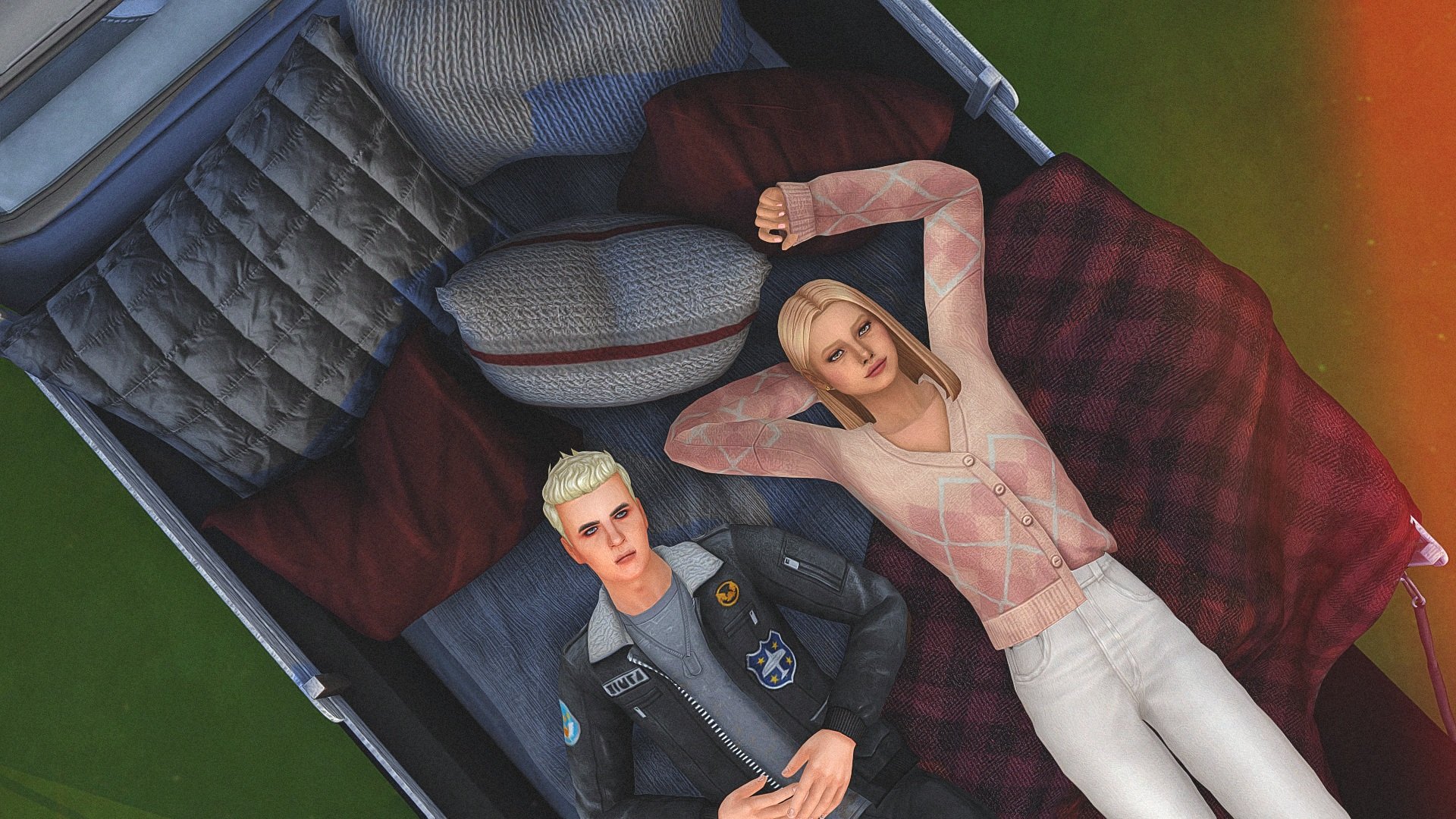
5. Post structure that always works
Narrative formula for Sims 4. Storytelling
Storytelling in Sims isn't about "what happened," but "how it felt."
Here's the structure I use in all significant scenes:
1) Opening – sensory hook
The air smells of rain and ash. Drops tap against the glass, as if someone is quietly asking to be let in. Mila sits on the windowsill, bare feet cold from the chill.
What this block does: instantly immerses the reader in atmosphere and physical emotion – the feeling of loneliness through smell and touch.
2) Development – actions and internal monologues
She opens an old chat. Her fingers hover over the keyboard: "Are you still there?" – deletes it. Closes the window. Opens it again. Her eyes catch on the date of the last message, and inside it becomes tight, like a room without air.
What this block does: reveals Mila's internal struggle – the battle between wanting to speak and the fear of being rejected.
3) Climax – emotional peak, gesture, pause
The phone drops to the floor. Mila covers her face with her palms, and for a second everything inside freezes. In the room there's only rain and headlights from the street – not a single word, but everything is said.
What this block does: creates an emotional peak without dialogue, through physical action and silence.
4) Finale – anchor detail, aftertaste
On the glass remains the print of her palm. The rain washes it away in a minute. She watches the trace disappear, and for the first time doesn't try to stop it.
What this block does: completes the scene with a detail in which the emotion dissolves, but leaves a trail – a symbol of letting go.
The takeaway:
This is why the structure works – even a miniature becomes a complete story.
Just 10–12 lines, but it has rhythm, breath, and meaning: beginning → conflict → peak → trace.
6. When the text won't come
What to do when you "can't speak"
If you feel like you can't write, don't write. Open a screenshot and just describe one sensation: "The smell of coffee"; "Cold glass in hand"; "She's holding his token."
Everything will start from there. Even if you're not ready for the scene with words, atmosphere will do half the work for you.
7. Presentation formats
How to format a post and dialogues
Posts don't have a "mandatory form." The narrative can be:
- Screenshots only: through poses, looks, and details.
- With short captions: one phrase per scene.
- With full text: like an episode of a series.
- Combined: where shots and words alternate.
Tip: It's best to mix them – this creates rhythm, liveliness, and breath.
Dialogues: three ways
On the screenshots themselves
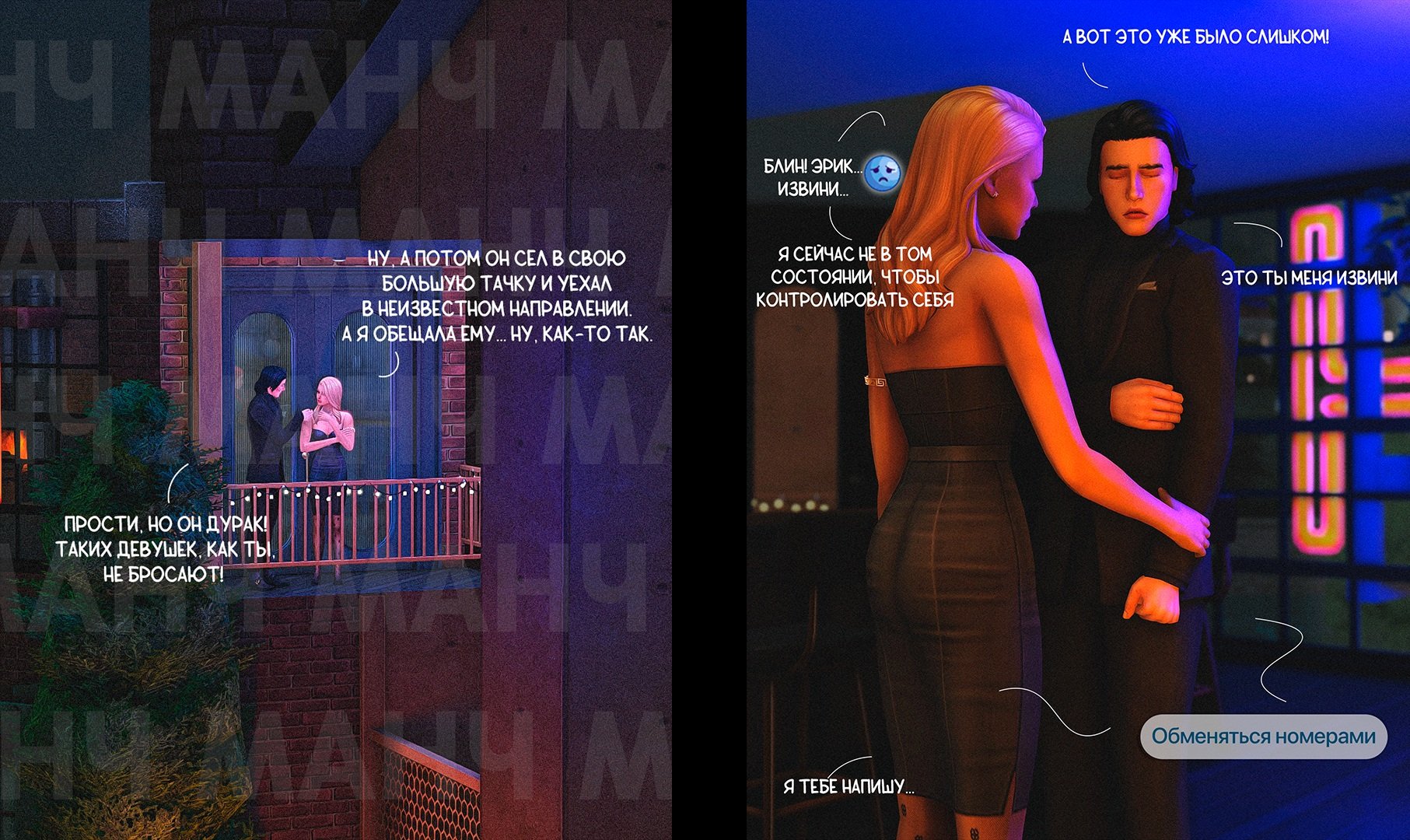
Below the screenshot
Create a separate "dialogue field," like a subtitle. This preserves the purity of the shot and adds a visual novel atmosphere.
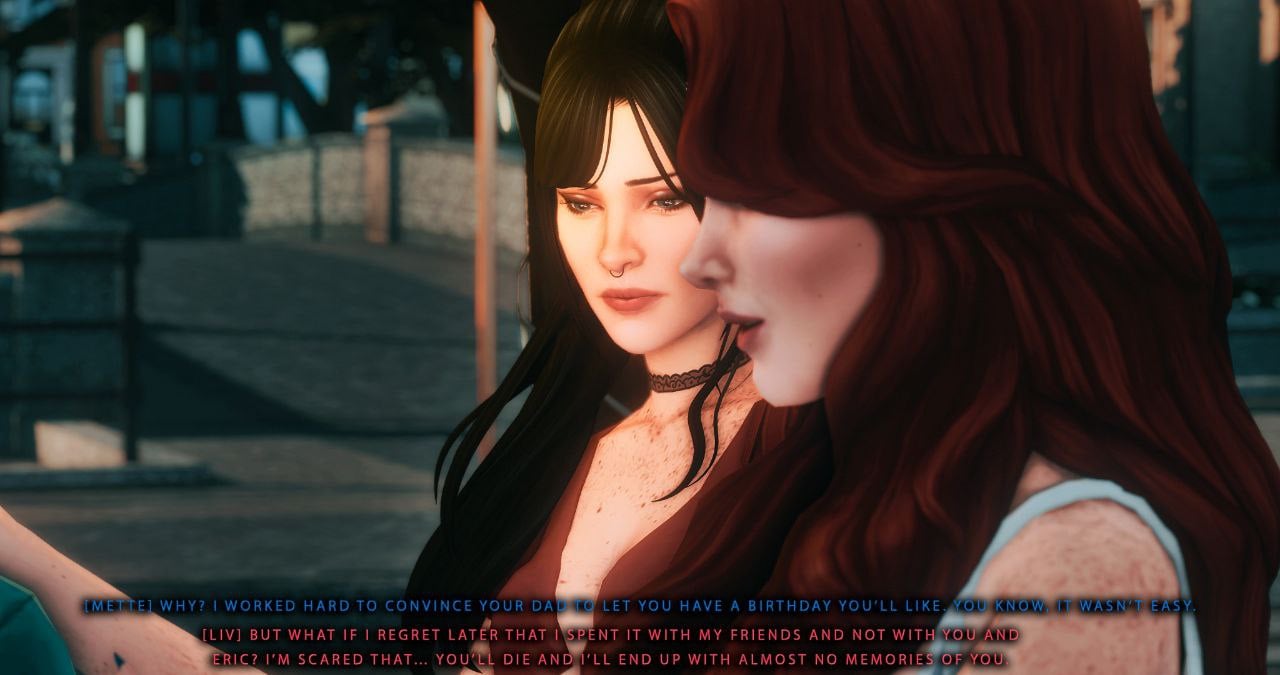
As separate text in the post under the screenshots
*All screenshots used with authors' permission*
8. When you have a story but no words
How to deal with creative "block"
Sometimes the structure is ready, but you sit down to write – and silence. Not because the story is bad, but because the voice isn't sounding inside.
A block isn't a dead end, it's a signal: "I don't feel what's important to say right now."
Don't rush. Try:
- review screenshots without the goal of writing
- turn on the scene's music
- ask yourself: who's the main character here, and what do they want?
When the emotion appears, the words will appear too.
Don't look for words – look for tone.
Instead of "She walked into the room": "The silence rang out, as if it knew he wasn't coming back."
9. Make a plan for the coming days
Mini-template for your Sims series
To avoid drowning in chaos, plan three episodes ahead.
Example:
Monday – "The Return"
Mila meets Wolfgang. Mood: tension, fear. Markers: cigarette smoke, trembling hands.
Wednesday – "Breakdown"
Fight on the waterfront. Mood: despair. Markers: wind, step back.
Friday – "Memory"
Night scene with the token. Mood: silence, acceptance. Markers: cold glass, streetlight glow.
10. Don't strive for perfection
Why imperfection makes a story alive
When I wrote my first posts about Mila, I edited everything five times. I wanted it to be "like in a series." But then I realized: Sims isn't Netflix. Sims is life.
It goes in bursts, with failures, miracles, and imperfection. And that's exactly where its beauty lies.
Let the scene be uneven. Let the emotion "wobble." The main thing is for it to be alive.
The takeaway
A story in The Sims 4 isn't a script. It's breath.
- Structure helps you not drown.
- Music and moodlets suggest emotion.
- Lore holds the axis.
- The game itself leads to where life begins.
Plan sessions, listen to music, write out motivations, and your dynasty will find its own voice.
